A Cement Planter With An Inset Design- Using A Cricut?

A DIY cement planter with succulent relief design that’s recessed into the cement! The design was created with a Cricut, but can be done by hand too!Making a cement planter with a succulent relief design is something I have been wanting to do for a long time. I had seen someone do something similar with lace and thought it was really cool, but since I’m not really a lace person, I wanted to make something with a design that fits my style.
I made endless searches for some kind of material that I could use to make this that would work -and had a design that got me excited. Then I finally found some silicone doilies and though the design wasn’t what I was looking for, I at least wanted to try to see if using these to cause a relief would work. I bought some of the doilies and gave them a shot and it turns out they worked wonderfully, though it turned out I did like the design, I still wanted something different.
Then realized I would have to create my own and since I had recently purchased a Cricut, I decided to make that my first project. Now the challenge was to find material like the silicone doily that I could use. And again after trying to find either thick vinyl or silicone sheets for the Cricut, I came up with nothing. However, I did come across the silicone mats that are used for baking, which I actually already had but it seemed a little thin. Then finally was able to find one that was 1.1mm thick, which was just about the thickness of my doily.
Hallelujah! I thought it would never happen. **If you are skilled with an X-acto knife, then you can still download my succulent design, purchase the silicone mat (you get 2 mats so keep one for baking) and then trace it with transfer paper onto the mat. From there, you can cut it out.The other option is to buy the silicone doilies. I haven’t been able to find other designs of this, but they do look really neat in relief on cement. Here’s a pic of the one I made. I used charcoal pigment to make it grey.
**If you like making cement crafts then you may want to check out my Cement Tests post. It's a comprehensive article where I tested different cement mixes, effects of sealers and sanding.
You will also be able to download my handy Pocket Guide to Cement Crafts there as well. First, you will need to trim the mat to fit the Cricut, and within its wheels. The mat is too thick for the Cricut’s wheels and it will lift up. Cut that to 10 ½” to be safe.
Download my free Cricut design using the form below, then upload it to the Cricut design program and proceed to the cutting settings. The material will need to be set to the Leather Shimmer 1mm, the pressure is the default, and then set the Cricut dial to custom.
Now load the silicone mat onto the Strong Cricut mat and load it into the machine. Follow the Cricut’s directions and cut.Remember, you can just print this on a regular printer and trace it with an X-acto knife.
**Sorry, I don't have the ability to put the upload here, but you can find it on my post Succulent Design Cement Planter on my blog. 
First, decide where and how you want the cutout placed. I started mine ½” from the bottom. Place the silicone cutout onto a piece of cardboard or newspaper.
Shake the spray adhesive can for about 30 seconds, then lightly spray the succulent design. Wait 10 seconds, then apply it to the inside of the outer mold. Apply firm pressure for a few seconds.
**If you like making things with cement, then you may be interested in the experiment I did where I tested 6 different types of concrete. I also tested sealing effects and more. You can read the Concrete and Cement Tests on my site. 
Cut off a piece of the straw to ½”. Since the glue adheres better if you have that straw-filled in, glue each end to close it. Now glue that straw to the center bottom of the outer cement mold.
Drop the inner mold inside so it touches the top of the straw. With the marker, draw a line for the stopping point on the inner cement mold to be sure you reach the straw when inserting it in the cement in the next step.
Mix the dry cement with water. For my size container, I used about 1 ½ cups of Cement All. Make sure you don’t have lumps- I like to smush my cement. The consistency should be like a wet mud pie. Now pour or scoop in the cement. I made mine so the cement was level with the top of the container.
Shake and tap the outer container until you see some air release. Don’t tap too much or cement may slip down between the cutout and the container. Now insert the inner mold.
The cement will spill over the edge, so just use your fingers to scoop it away. Then smooth the top edge. If the inner mold rises up, grab the supplies you are using for weights and place them on top.
Let this cure. If you want the planter to be shiny, then wait about 3-4 hours before demolding. Otherwise, you can demold after about 2 hours. Just make sure it’s not still warm when you demold.
Place a towel or rag on the work surface and flip the cement mold over. Use the heat gun to help release the bottom as well as the side of the container.
If the planter doesn’t slide out, then you may need to try creating a deep slit in the back of the container with the X-acto. Try not to go through the plastic, just get close.
Note: My inner mold came out without any need for the heat gun or other, but the outer mold was a pretty thick plastic and I decided to use a heat tool to create the slit. I didn’t cut all the way through and I was able to use the heat gun to pop the container open where I had basically scored it.
However, it did leave a line from the heat tool. As I said, if you score with the X-acto, you may be able to avoid the scoring line. But again, your release luck will vary greatly upon the type of container you use.
Now for the best part! To remove the succulent relief from the cement planter, you will likely have a bit of cement covering part of the silicone succulent piece. Just take the X-acto knife and use the backside to gently push away the cement that is covering the design.
Now use the back to gently lift away a piece of it. From there, you can pull it off with your fingers.
Enjoyed the project?
Resources for this project:
See all materials
Comments
Join the conversation
-
 Robyn Garner
on Mar 11, 2021
Robyn Garner
on Mar 11, 2021
Another great tutorial on concrete - thanks!

-
 Artsy Pretty Plants
on Mar 14, 2021
Artsy Pretty Plants
on Mar 14, 2021
Thanks Robyn!
-
-
-
 Donna Morris
on Mar 14, 2021
Donna Morris
on Mar 14, 2021
thank you
-





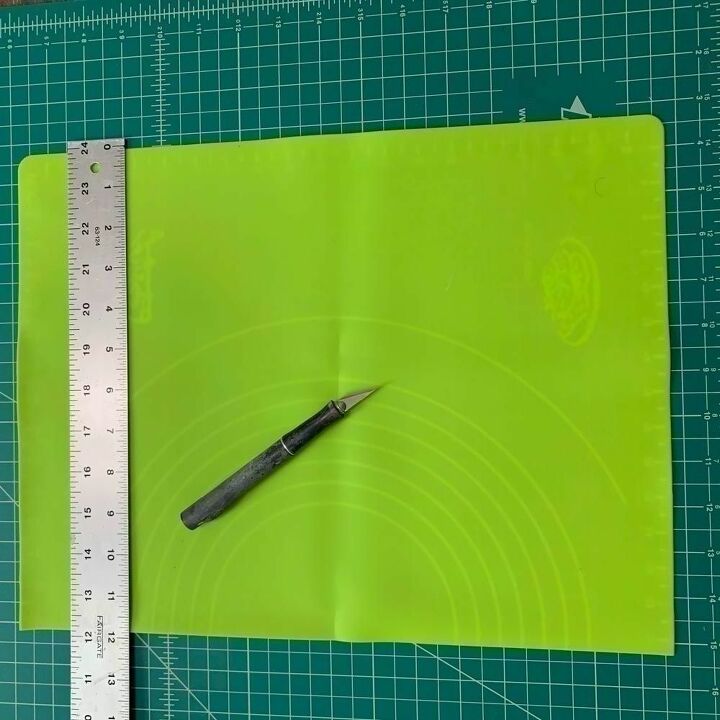
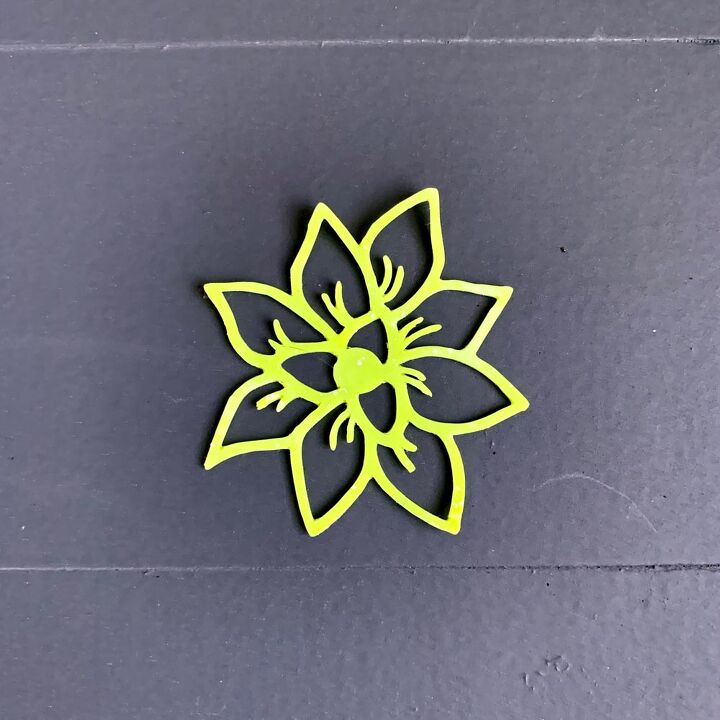





















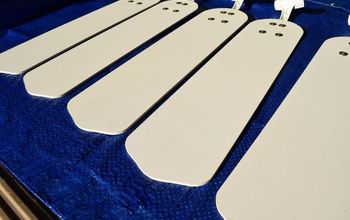





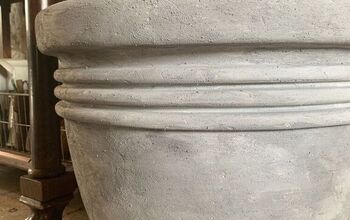

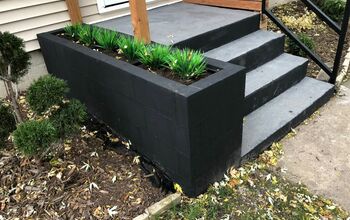
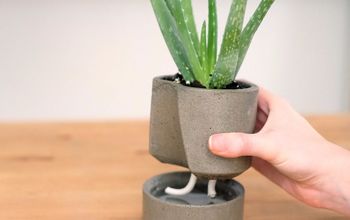
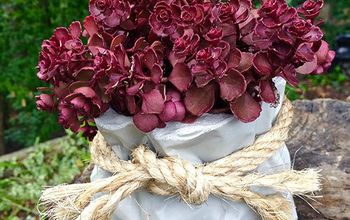
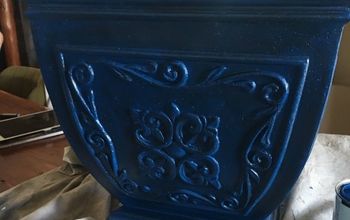




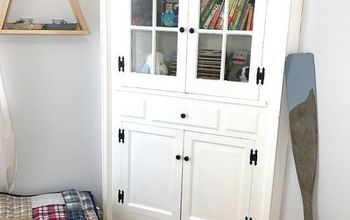


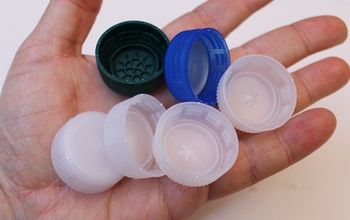


Frequently asked questions
Have a question about this project?
Just wondering from the picture, did you paint it? If yes, what kind of paint did you use? Thanks!